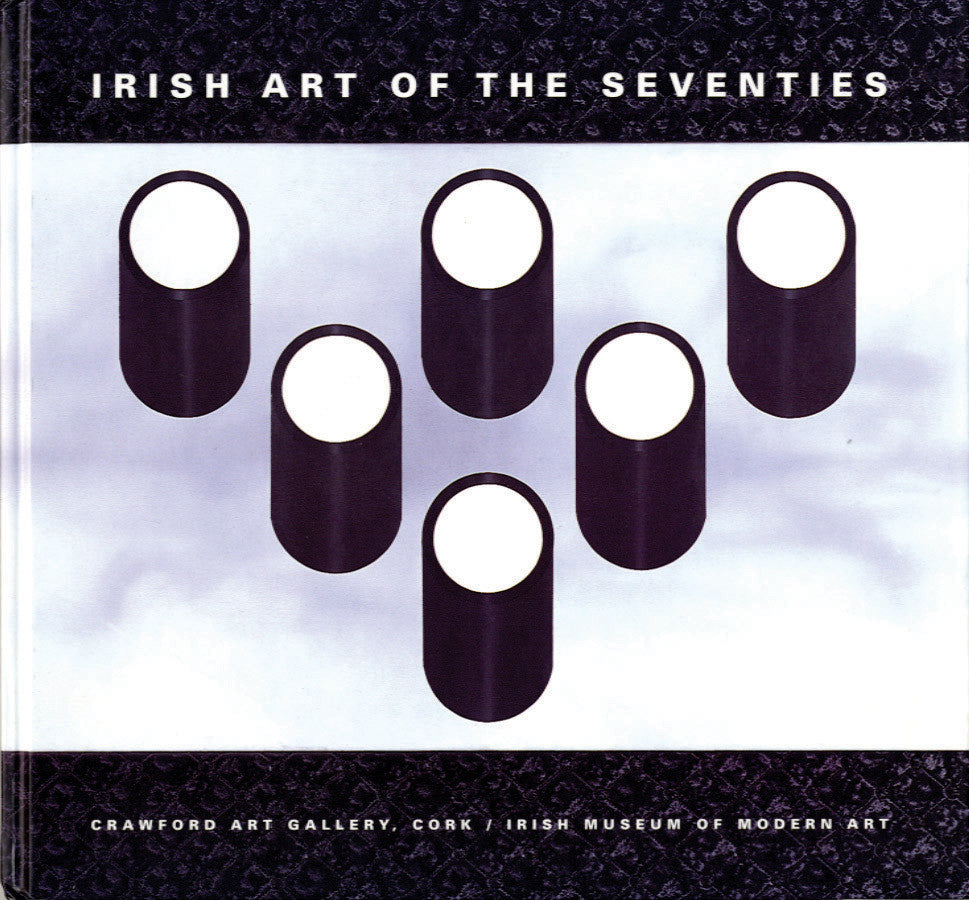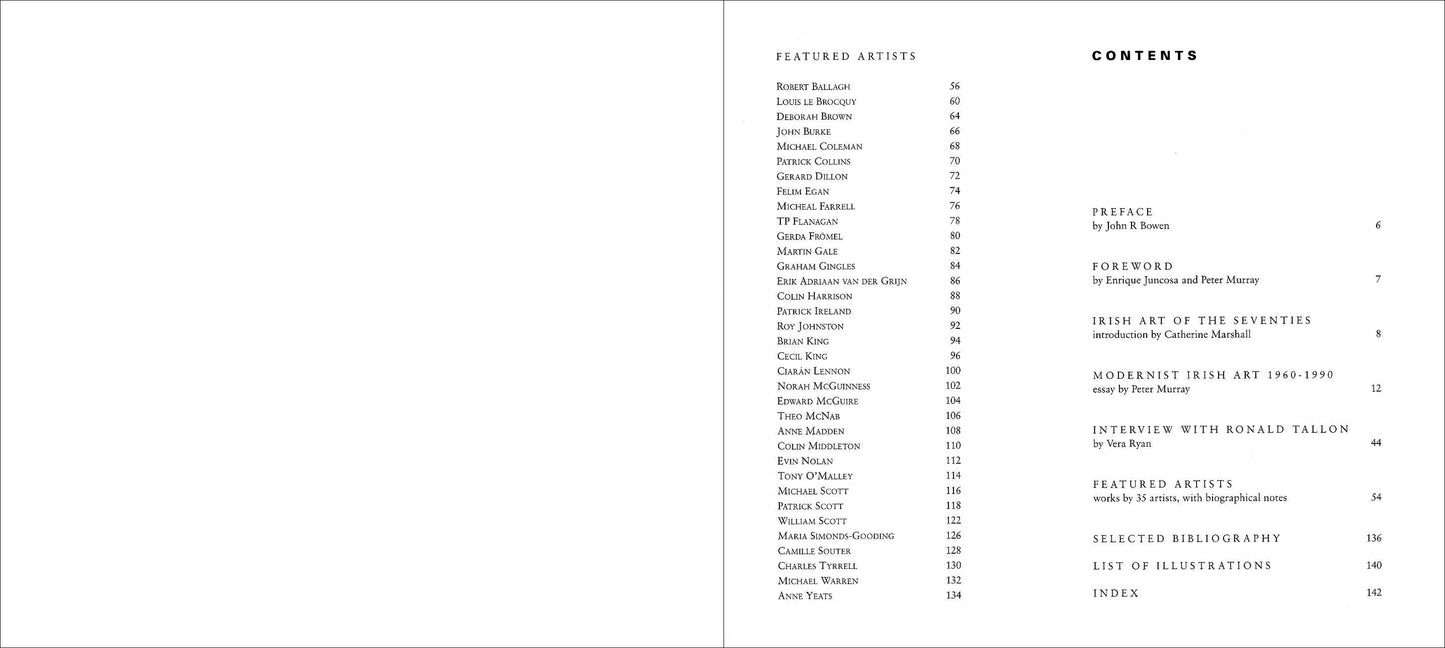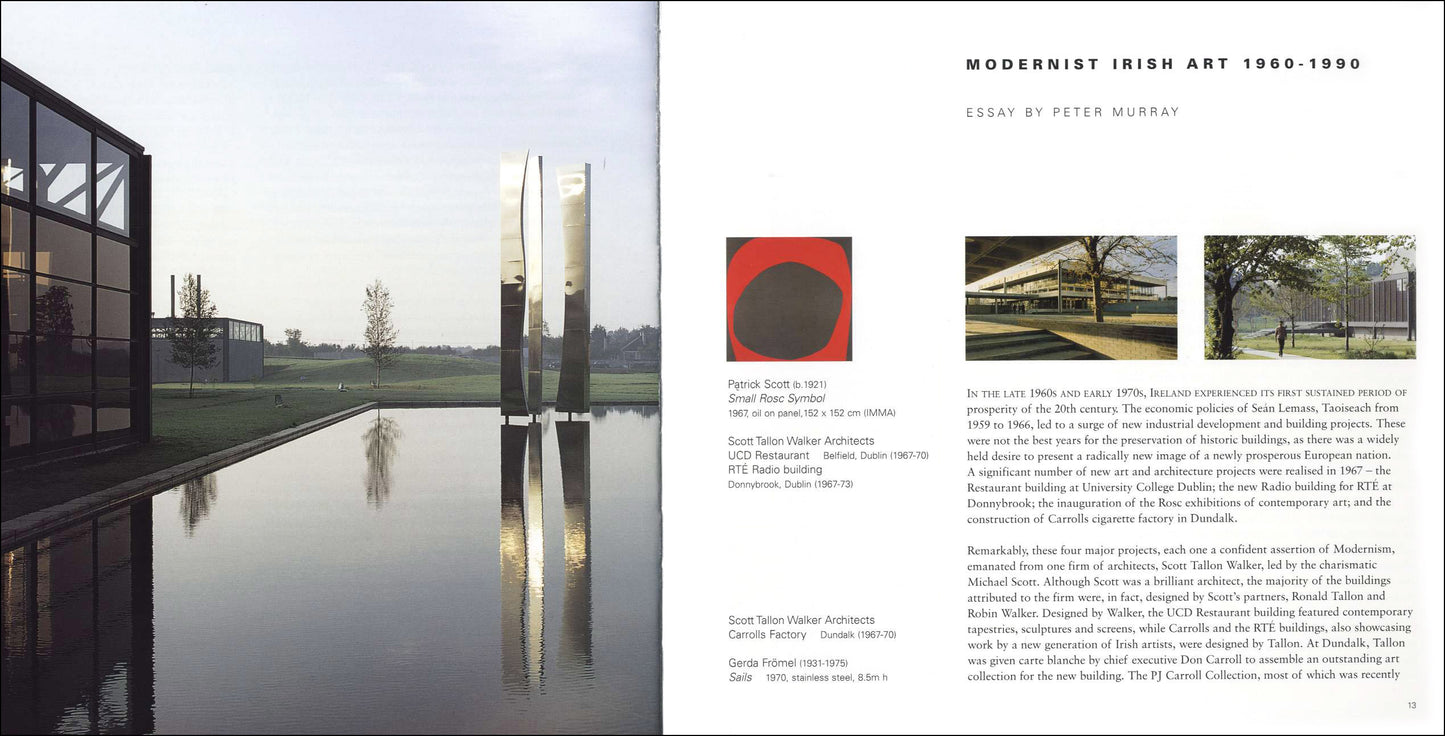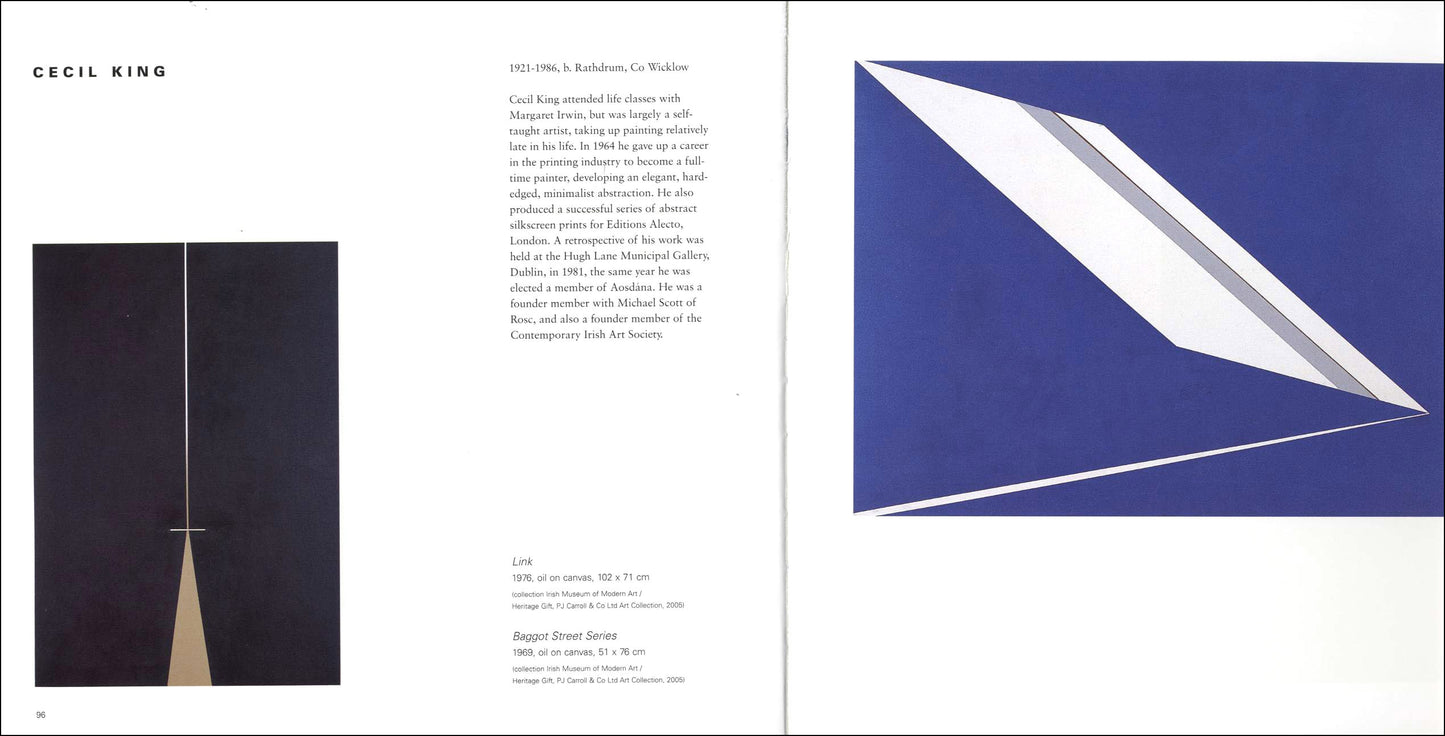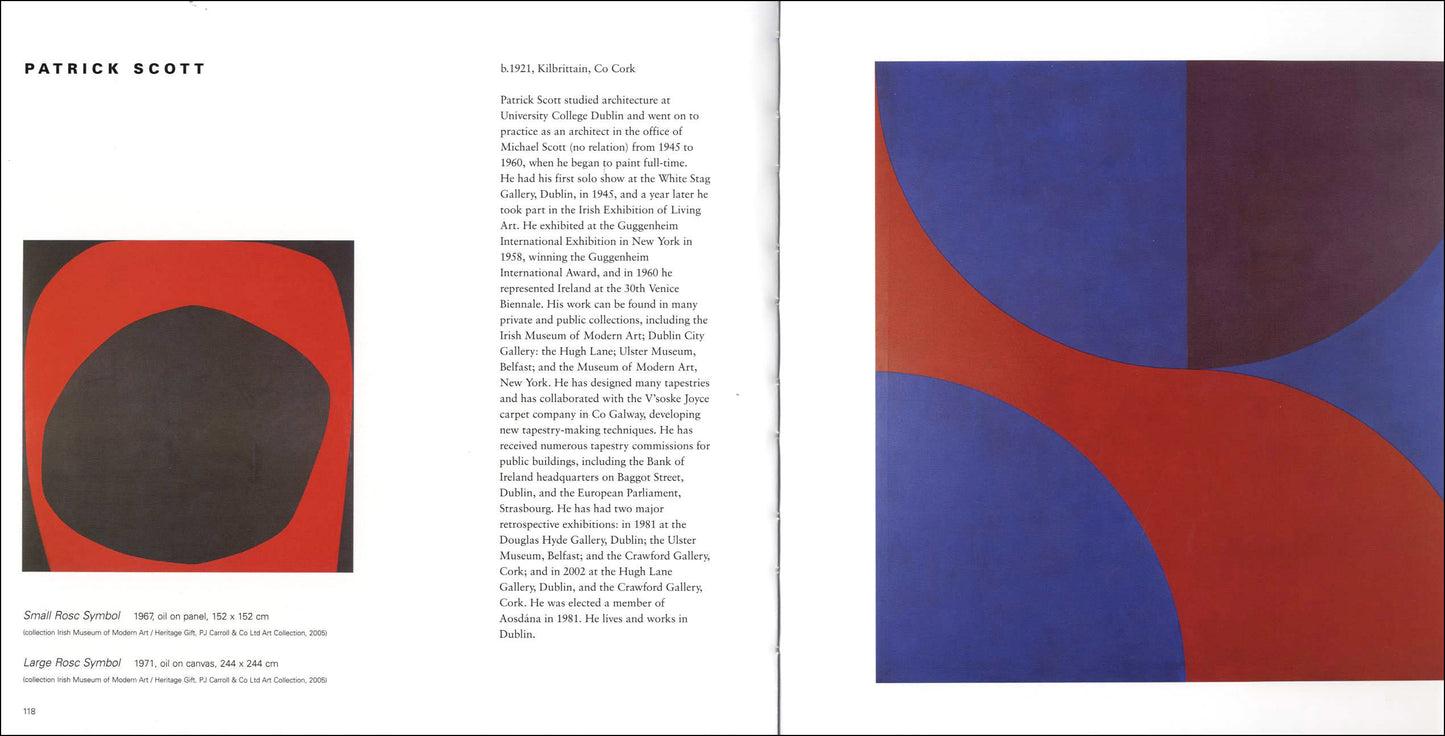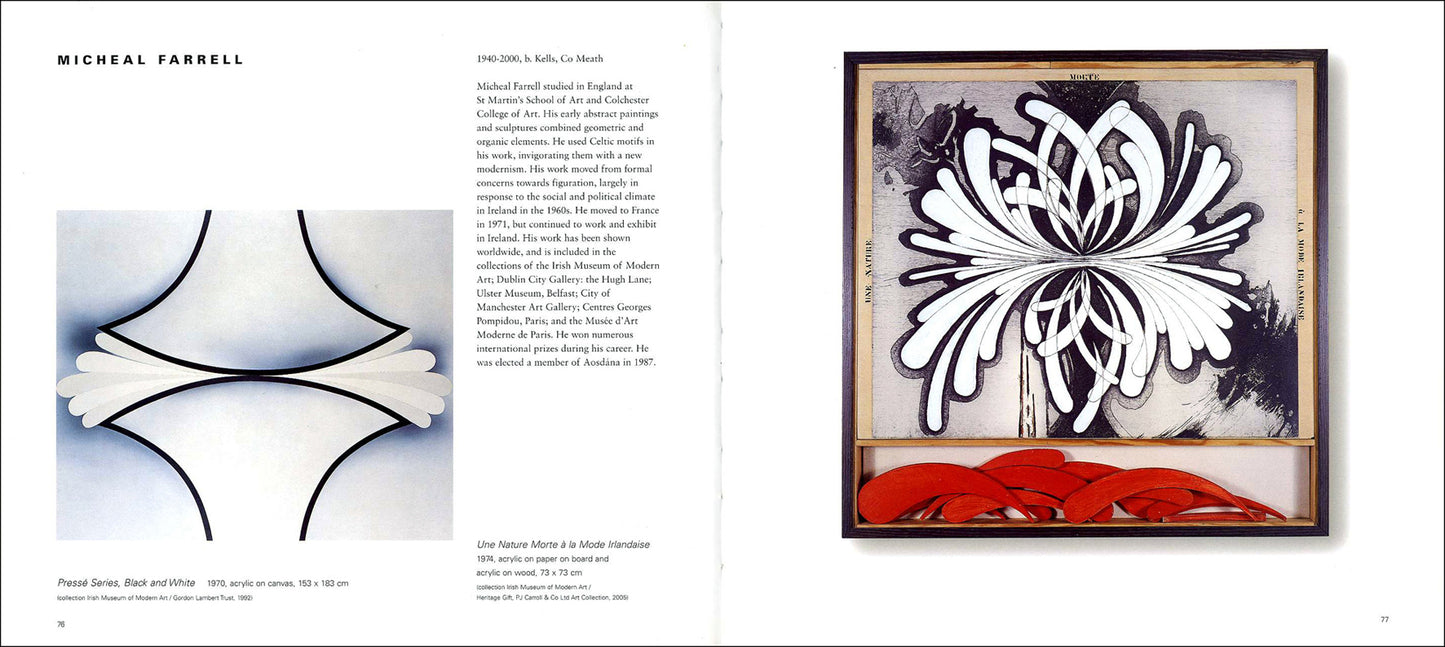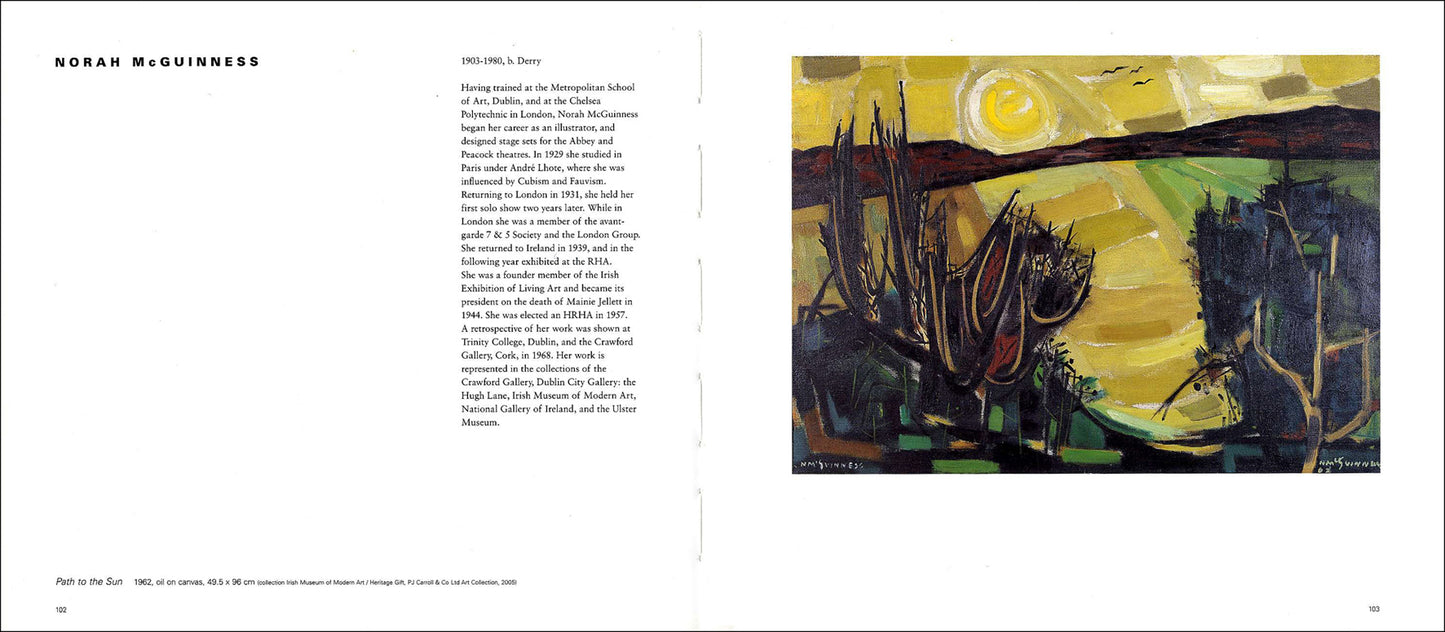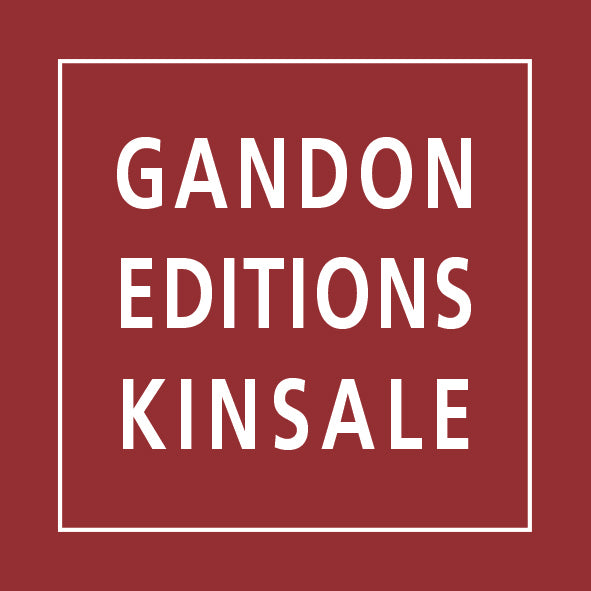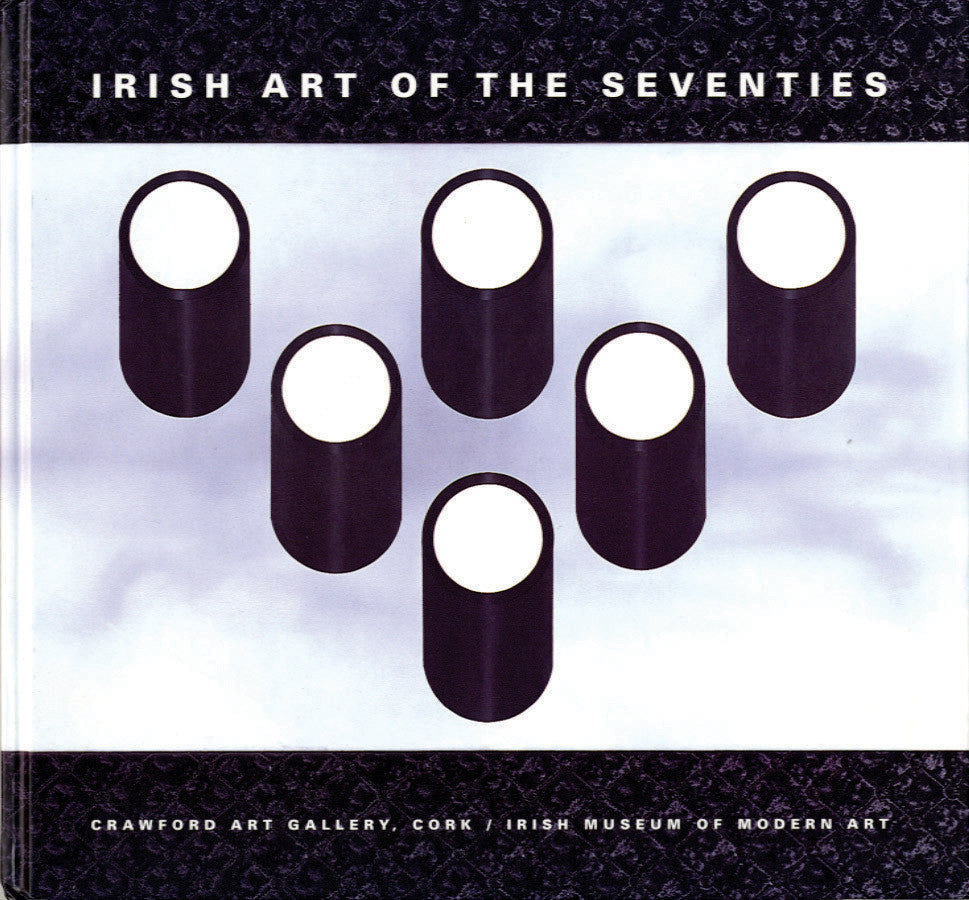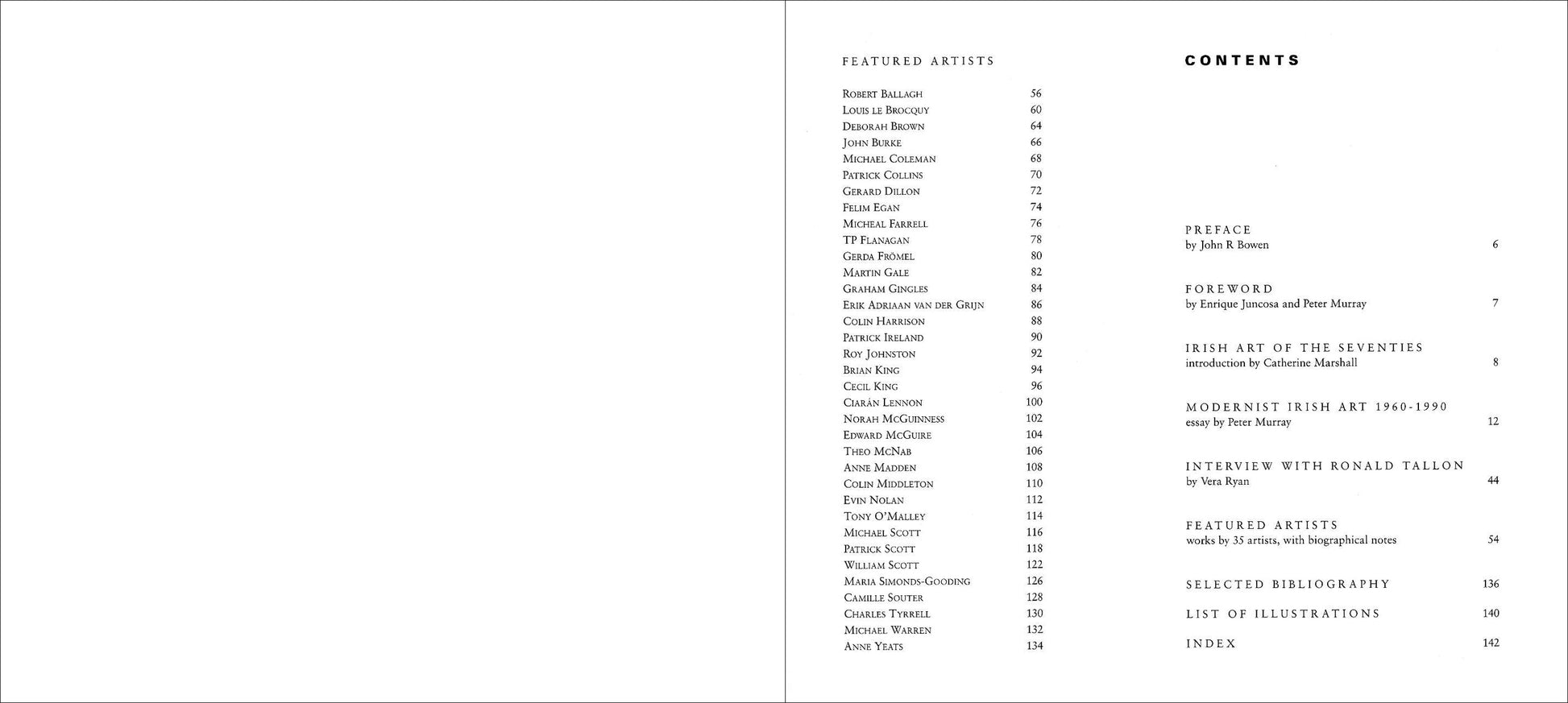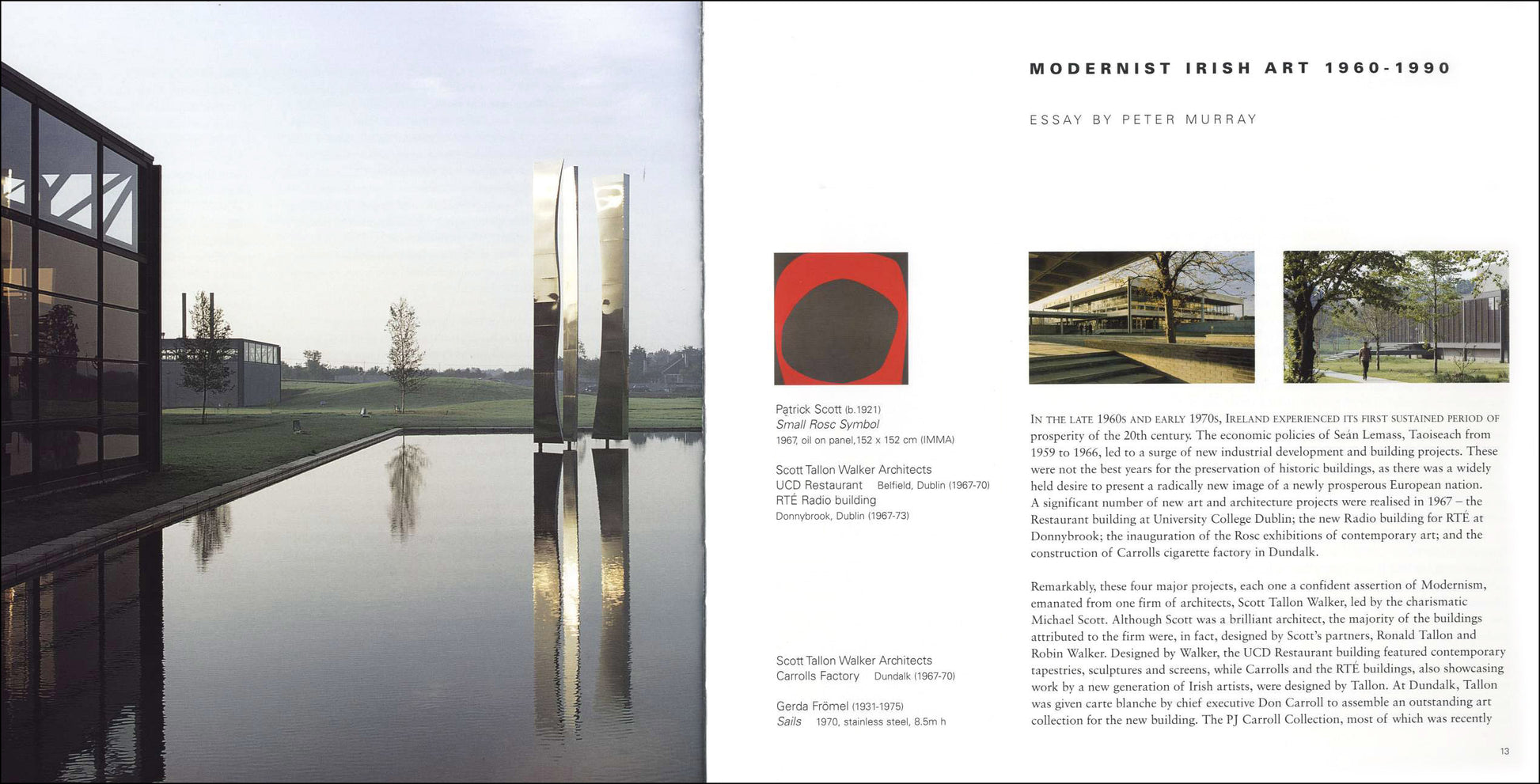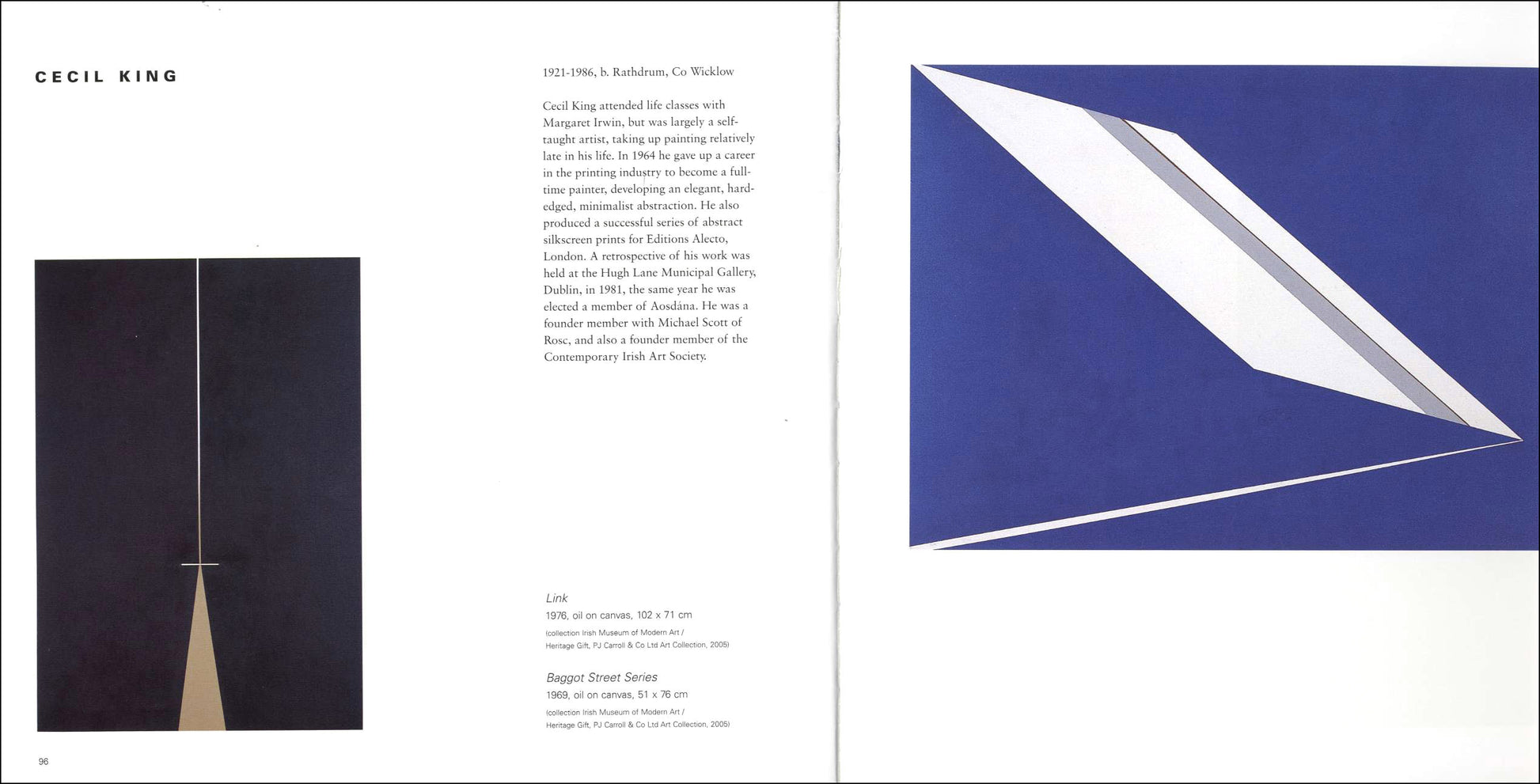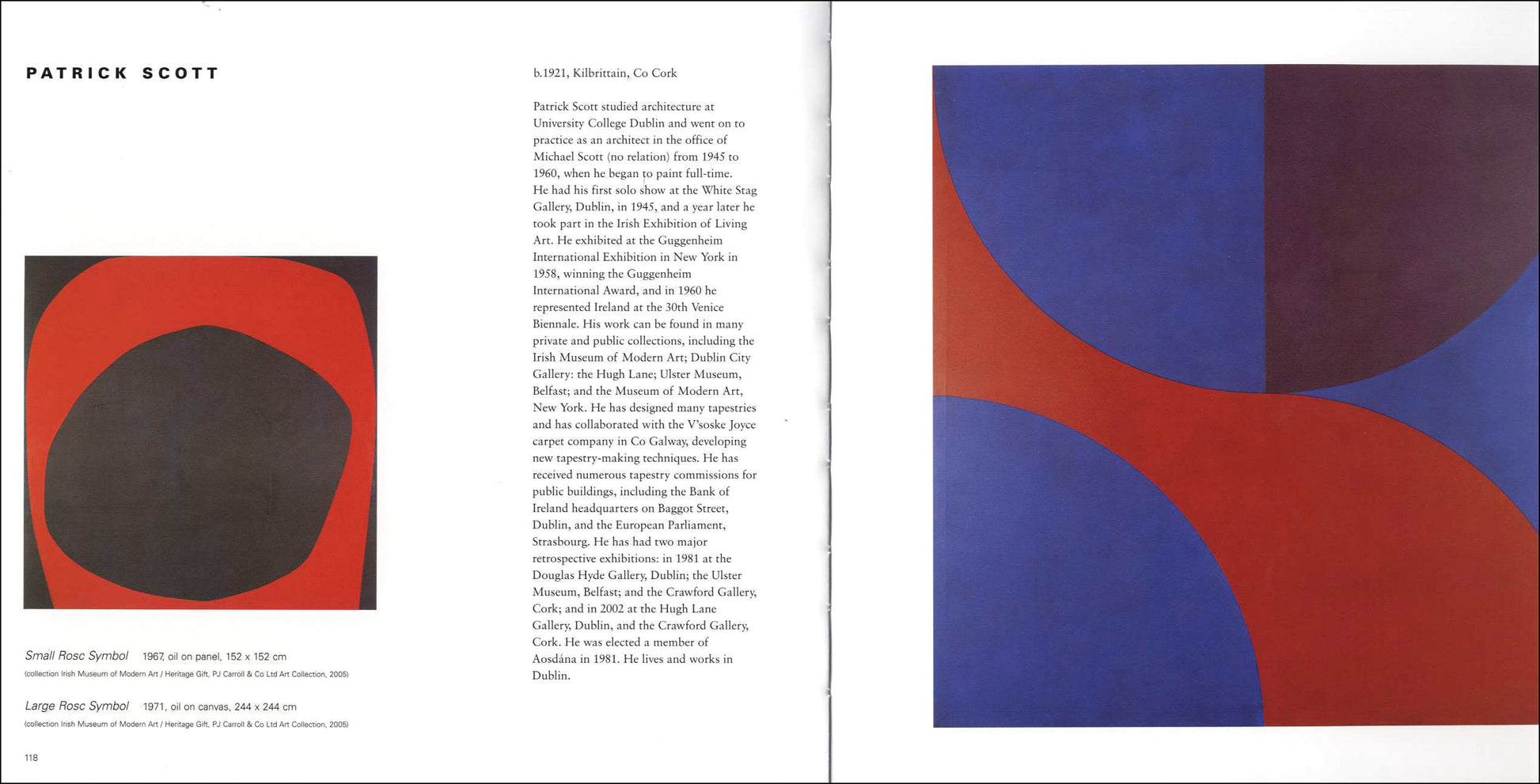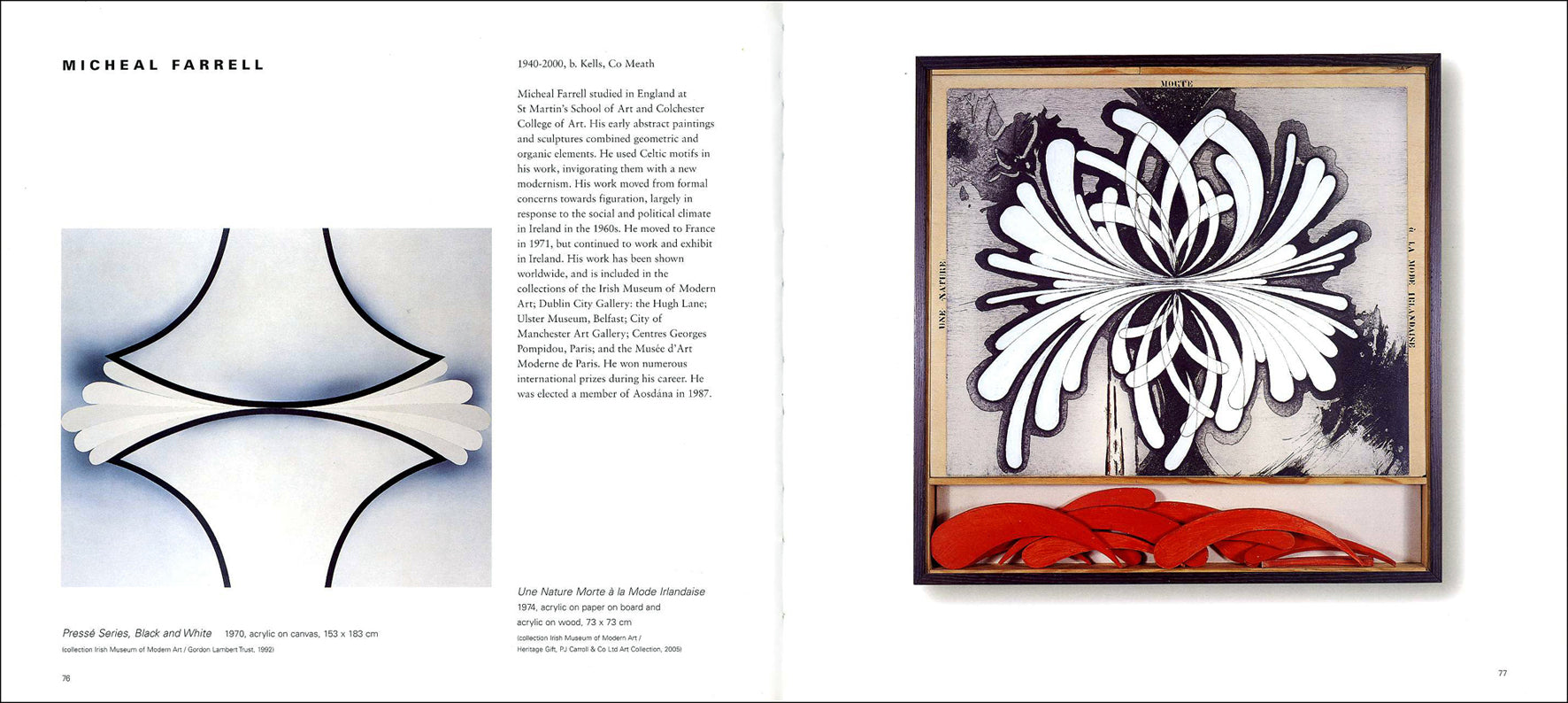Crawford / Gandon
IRISH ART OF THE SEVENTIES — Modernist Irish Art 1960-1990
IRISH ART OF THE SEVENTIES — Modernist Irish Art 1960-1990
Couldn't load pickup availability
Share
ed. Peter Murray
intro by Catherine Marshall; essay by Peter Murray; interview with Ronald Tallon by Vera Ryan
ISBN 978 0948037 344 144 pages (hardback) 22.5x24.5cm 180 illus list of illus index bibliography
Surveying over three decades of Irish art, with particular focus on the critical turning point for Irish art that was the 1970s, this fascinating book features work by 35 Irish artists, each with full-page illustrations and biographical note.
EXTRACTS
"Although for convenience titled Irish Art of the Seventies, with the majority of works dating from that decade, this book in fact spans three decades, with the earliest works dating from the late 1950s. The works, drawn mostly from the PJ Carroll and Gordon Lambert collections at the Irish Museum of Modern Art, show the development of Modernism in Irish art during years in which the image of Ireland began to be transformed from one of rural thatched cottages to a modern industrialised urbanised nation. The architects Scott Tallon Walker were key to this transformation. Taken on its own, the PJ Carroll Collection essentially reflects the artistic vision of one person, the architect Ronald Tallon, senior partner with Scott Tallon Walker, who designed a new factory in 1967 for the Carroll cigarette company in Dundalk. Most of the works are pure abstract or minimalist, expressing a high Modernist ideal fully in keeping with the pure, minimalist, geometric buildings designed by the firm. With the accession of the Carroll Collection into the permanent collection of the Irish Museum of Modern Art, a fuller story of the art of the period can be told. This book and exhibition also include works from the Gordon Lambert Collection at IMMA, another important landmark in the development of the national collections of Irish art."
— from the foreword by Enrique Juncosa / Peter Murray
"John Banville has argued that ‘the 60s did not properly arrive for us [the Irish] until the mid-70s’. Where then, should we locate the 1970s? For the purpose of this book the definition is flexible, looking back, briefly, to the 1960s and forward to the 1980s. What cannot be doubted for a moment is that wherever we locate its origins, there is a recognisable flavour to the art of this decade in Ireland that marks it out from the main thrusts of the periods before and after it.
In 1967 the first Rosc exhibition was held in Dublin’s RDS. This was a major exhibition of international contemporary art, selected by James Johnson Sweeney. From then until the third Rosc in 1977, when the first two Irish artists, James Coleman and Patrick Ireland, were invited to participate, there was considerable movement, development and debate about contemporary art in this country. While it can certainly be argued that International Modernism finally arrived with the first Rosc, it is also fair to say that, for the most part, Irish artists continued to work within the traditional practices of painting and sculpture until the end of the 1970s, after which there was a notable swing towards installation and performance art, as well as towards photography and new media. All of these practices began to make a presence in subsequent Rosc exhibitions by Irish as well as international artists. Within their traditional practices, however, the painters and sculptors were more than willing to tackle innovation.
The works in this book chart some of the most significant developments within their respective fields. Against a background of entry to the European Common Market, oil crises, the founding of the Irish Women’s Liberation Movement, the reorganisation of the National College of Art, a visit by the Pope, and the ever-present ‘Troubles’ in Northern Ireland, artists, collectors, critics and altruistic patrons worked to expand horizons for contemporary art. A new economic environment, fuelled by Seán Lemass’s trade agreements and membership of the EU, energised a spurt of industrial and office expansion, and in the process, created a market for artworks to embellish new large-scale architectural situations. Suddenly, it seemed, there was a market in Ireland for artworks on a grand scale, which were sympathetic to Modernism, abstraction and Pop art. Many changes in the Irish art world, most of them for the better, have come about since the 1970s, thanks to all those artists and collectors who did so much in that innovative decade in Irish cultural life. With the benefit of hindsight, that decade appears heroic, unique and unforgettable."
— from the introduction by Catherine Marshall
|
CONTENTS Preface by John R Bowen 6 2-4-page spread on each artist (incl. colour illus + individual texts on each artist) ... artists are also discussed in the main essays and interview Robert Ballagh / Louis le Brocquy / Deborah Brown / John Burke / Michael Coleman / Patrick Collins / Gerard Dillon / Felim Egan / Micheal Farrell / TP Flanagan / Gerda Frömel / Martin Gale / Graham Gingles / Erik Adriaan van der Grijn / Colin Harrison / Patrick Ireland / Roy Johnston / Brian King / Cecil King / Ciarán Lennon / Norah McGuinness / Edward McGuire / Theo McNab / Anne Madden / Colin Middleton / Evin Nolan / Tony O’Malley / Michael Scott / Patrick Scott / William Scott / Maria Simonds-Gooding / Camille Souter / Charles Tyrrell / Michael Warren / Anne Yeats |
